Thank You so Much-a For Playing my Games!
Super Mario is a series that doesn’t need any introduction. Mario may not have invented the platforming genre, but the series did pull from those that came before it to create the blueprint for both 2D and 3D platformers, transforming Nintendo into the Goliath of the company it is today. The series has become the gold standard for the genre and still continues to advance and perfect it to this day. With games spanning every console from the NES to the Switch, Mario’s been on plenty of adventures in his over 30 years of mascot hood. Here’s every mainline Mario game that’s graced a Nintendo home console and handheld system (re-releases not included).
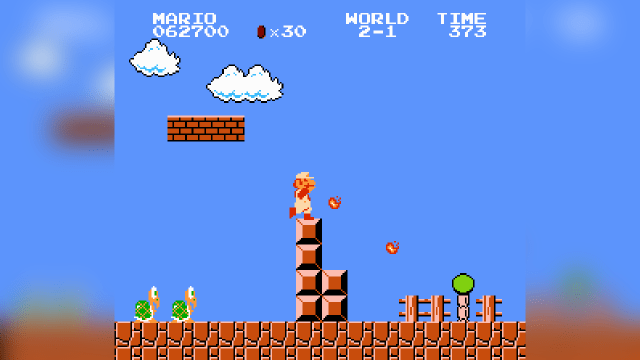
Super Mario Bros.
Original Release Date: September 13, 1985
The first game in the series. There’s not much to say about Super Mario Bros. other than it’s the game that jumpstarted what we know today as the 2D platformer genre. The game’s music has been ingrained into anyone who’s heard of a video game, and the fun and challenging level design was simple to understand but difficult to perfect. The game introduced players to everyone in the Mushroom Kingdom: Mario, Luigi, the Toads, and Princess Toadstool (called Peach in Japan), as well as Bowser and his minions, like the lowly Goomba, Koopa Troopa, Lakitu, and even the Blooper.
Super Mario Bros. set the framework for classic 2D platformers, a formula that is still used today.
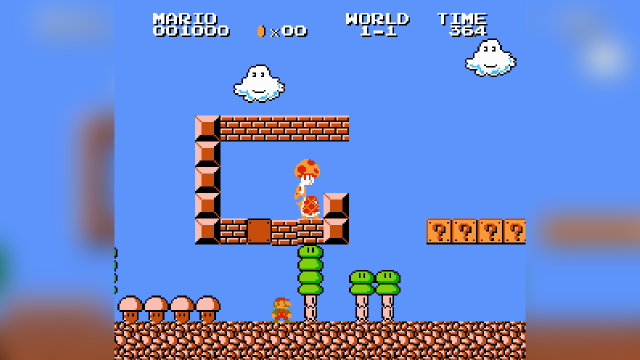
Super Mario Bros.: The Lost Levels
Original Release Date: June 3, 1986
When it came time for Nintendo to release Super Mario Bros. 2, Nintendo of America playtested the game. After their tests, they deemed the title too difficult for American audiences and cited that the similar art direction wasn’t enough for players to remain invested in the budding series. This caused Nintendo of America to develop a separate version of Super Mario Bros. 2 for the states.
However, Japan’s Super Mario Bros. 2—referred to as Super Mario Bros.: The Lost Levels throughout the rest of the world—would add key features to this adventure that would become staples of the Mario series going forward.
For example, the introduction of Red Piranha Plants that would still attack when Mario is near the pipe, the addition of Luigi having a higher jump, but having less traction, the introduction of eyes on every piece of vegetation in the Mushroom Kingdom, and of course, the infamous Poison Mushroom.
Super Mario Bros.: The Lost Levels wouldn’t see an American release until the release of Super Mario All-Stars on the Super Nintendo, making its way overseas in 1993.
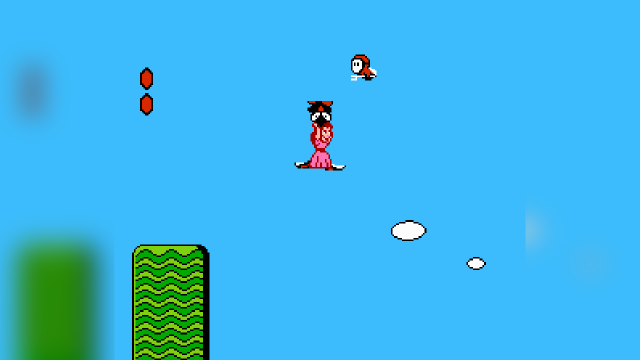
Super Mario Bros. 2
Original Release Date: October 9, 1988
While America didn’t receive Japan’s version of Super Mario Bros. 2, the version they did receive was something completely different. Nintendo had worked on a Super Mario-style prototype for a game, introducing picking up enemies and vertical levels. When Japan’s Fuji Television company asked them to make a game featuring the company’s mascots, they turned the prototype into a game called Doki Doki Panic, becoming a smash hit in Japan.
Fast forward to 1987, when Nintendo of America saw Japan’s Super Mario Bros. 2, they were worried that the game would be a commercial failure due to its high difficulty and similar graphics. Nintendo, realizing that they had a perfectly good game in their library, reverted the licensed changes to Doki Doki Panic, giving America their version of Super Mario Bros. 2.
Super Mario Bros. 2, called Super Mario USA in Japan, introduced players to many mainstay mechanics and features that became critical parts of the Mario series. For Example, Mario’s all-rounder stats, Luigi’s high kicking jump and low traction, Toad’s Speed, and Princess Toadstool’s floating ability make their first appearance in this title. Mainstay enemies also make their first appearances, such as Bob-Ombs, Pokeys, Shy Guys, and Sniffets. This title also introduced players to Birdo, who would become a staple of the various Super Mario spin-off franchises.

Super Mario Bros. 3
Original Release Date: October 23, 1988
Nintendo decided to go all out for Super Mario Bros. 3. This would mark the first time Nintendo brought a proper co-op element to the series. Two players could take on the adventure as both brothers, tag-teaming levels. While you couldn’t play a level at the same time, taking turns opened up new pathways in the new world map, allowing more skilled players to take on harder levels. Mario and Luigi could also store powerups they find in the new Toad Houses, and participate in minigames to gain extra lives.
Super Mario Bros. 3 also introduced players to the Koopalings, who were originally listed as Bowser’s kids before Nintendo retconned that little piece of lore. Each Koopaling serves as the final boss of their respective world, and each one is named after a famous musician, such as Ludwig Von Koopa being named after Ludwig Von Beethoven, or Iggy Koopa named after Iggy Pop.
Level design has also changed in this new title as well, this would be the first time players encountered auto-scrolling levels, testing players’ patience and reflexes as they have to work with the game to ensure their victory. Vertical levels also make a return from Super Mario Bros. 2 utilizing the plethora of pipes Mario’s seen on his adventures.
Super Mario Bros. 3’s stageplay aesthetic, intricate level designs, and new powerups like the Super Leaf and the Frog Suit, make it one of the most interesting Mario titles on the NES and continue to bring back players to this day.

Super Mario Land
Original Release Date: April 21, 1989
Mario’s first foray onto the Game Boy takes him outside of the Mushroom Kingdom and into Sarasaland. While this is the first game in the series (besides Mario Bros.) that takes the plucky plumber outside of the Mushroom Kingdom, Sarasaland’s many kingdoms are reminiscent of real life. World 1’s Birabuto Kingdom is based on Egypt, complete with a Sphynx for a boss. Other worlds, like the Easton Kingdom, are based on Easter Island, having walking Moai heads charge at Mario.
A change of location also meant a change of princess as Mario’s quest set him out to rescue Princess Daisy. The final boss sees the plumber take to the skies in a plane, fighting the alien Tatanga in sole appearance as a main antagonist of a Super Mario title. Daisy, on the other hand, would go on to be a featured player in the franchise, popping up in spinoff titles like Mario Kart and Mario Tennis. Sadly, her homeland of Sarasaland would be relegated to mentions in the Wario Land series and Daisy’s biography.
Despite its short length, Super Mario Land brought the 2D Mario formula to players on the go and provided an exciting and innovative Mario adventure.

Super Mario World
Original Release Date: November 21, 1990
With the release of the Super Famicom and Super Nintendo, Super Mario World furthered the Mario formula in many ways. The title introduced saving your game onto the cartridge, allowing players to shut their console off without fear of losing their progress. The title also introduced mainstay elements like secret exits and the introduction of the Star World and Special Zone. The Star World and Special Zone consisted of highly difficult levels, made for skilled players. While these worlds weren’t required to complete the game, completing the level “Funky” in the special zone causes the entire game to transition to a “Fall” variant. This permanently changes the look of the game, donning the enemies with new apparel and theming the game after autumn.
Following Mario on his adventure is Yoshi, making his debut in a mainline title. In Star World, Mario can encounter multicolored baby Yoshis, who will grow into adults after they’ve eaten enough enemies, with each one gaining a special ability, like the Blue Yoshi being able to fly.
New enemies, like the Magikoopa, also make their first appearance in the game, shooting spells at Mario and teleporting away right as he’s about to stomp on them. This also marks the introduction of Reznor, a miniboss in four of the fortress levels. Super Mario World also introduced the Banzai Bill and the Chargin’ Chuck enemies.
Super Mario World set the standard for how 2D Mario adventures would function for years to come.

Super Mario Land 2: 6 Golden Coins
Original Release Date: October 21, 1992
The second 2D outing for Mario on the Game Boy was a massive upgrade compared to Super Mario Land, featuring a more modern art style and plenty of more levels, as well as being the first console-quality adventure on a handheld. Mario embarks on a journey through Mario Land to reclaim his castle after his nefarious doppelganger Wario has taken over all of Mario Land.
Super Mario Land 2: 6 Golden Coins, aside from being Wario’s first debut as a rival and villain in the Mario series, brings plenty of new ideas and mechanics into the game from previous titles. Instead of a linear adventure, Mario is able to tackle any world (called Zones) in any order he pleases. Mario also dons some new powerups that are similar to ones from previous titles, such as the Carrot functioning similarly to Super Mario Bros. 3’s Super Leaf, allowing players to tap the A button to let Mario glide across long gaps.
Super Mario Land 2: 6 Golden Coins is also the second, and final appearance of Tatanga, the final boss of Super Mario Land as he was working with Wario, keeping him busy by capturing Princess Daisy while Wario took over his castle. 6 Golden Coins remains the strongest Mario adventure on Nintendo’s first handheld.
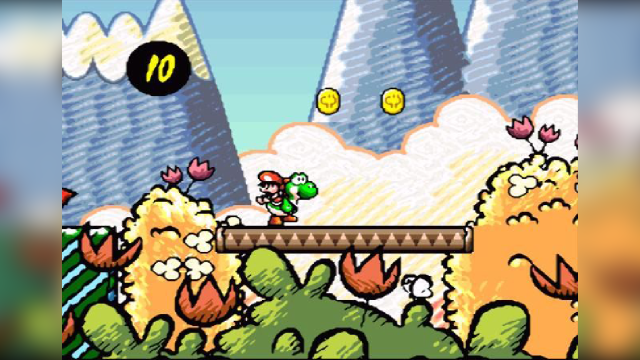
Super Mario World 2: Yoshi’s Island
Original Release Date: August 5, 1995
Before the end of the life cycles of the Super Famicom and SNES, Nintendo released Super Mario World 2: Yoshi’s Island. Using the power of the Super FX 2 chip, Yoshi’s Island brought a colorful adventure to Nintendo consoles, allowing players to embark as Yoshi, helping Baby Mario reunite with his brother Luigi.
Yoshi’s Island introduced mechanics not found in previous mainstay titles, as players would play through the whole game as Mario’s companion. Yoshi and his friends can eat enemies, allowing them to lay and throw eggs at switches and enemies that can’t be eaten. Players wouldn’t lose a life upon being hurt, instead, Baby Mario would be knocked off Yoshi’s back, causing him to begin wailing as a timer ticks down. If they can’t catch Mario and stop his (extremely annoying) crying, he’ll be whisked away by Kamek’s toadies, netting the player a game over.
Yoshi’s Island allowed Nintendo to experiment with their bosses and level design for this outing. Levels like “Touch Fuzzy, Get Dizzy” cause the world to warp and distort when Yoshi touches the aforementioned fuzzy. Some levels also allow Yoshi to take on special transformations, such as turning them into a helicopter or a submarine. Boss levels at the end of each world saw Kamek, Bowser’s appointed Magikoopa, take on the role of antagonist. Each boss would be enhanced by Kamek’s magic, providing a greater challenge for Yoshi, such as the Bigger Boo, and the Naval Piranha.
Reaching the final level, Yoshi will have to take on a gargantuan Baby Bowser, pushing the Super FX 2 Chip to its limits.
Super Mario World 2: Yoshi’s Island uses its crayon-like art style and level design to set the blueprint for the Yoshi series going forward. Its title as Super Mario World 2 however, allows it a spot as a mainline game.
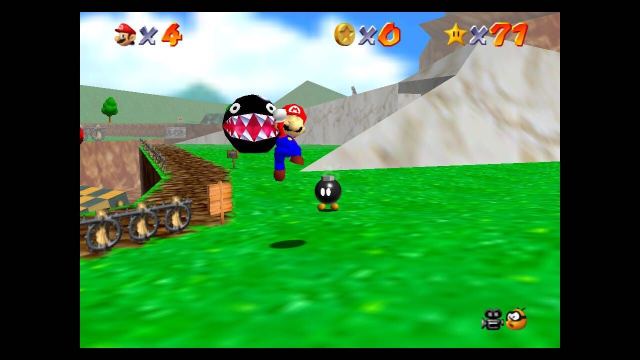
Super Mario 64
Original Release Date: June 23, 1996
Super Mario 64 marks Mario’s first foray into the 3d realm, and the first time Princess Toadstool’s name was changed to Princess Peach in a mainline title outside of Japan. Nintendo’s goal of transitioning Mario into a 3D format was achieved, though its success would unintentionally change gaming as a whole. Gone were flagpoles and conventional power-ups. Instead, players were encouraged to complete objectives within open levels. While some objectives were linear, players could use each sandbox-like world to complete whatever objective they pleased.
Completing objectives would net the player power stars, which they could use to open the many locked doors inside Peach’s Castle, functioning as a hub world for each level. Mario 64 introduced powerups in the form of caps. Players could walk through grates with the Invisibility Cap, trudge through currents and walk on the sea floor with the Metal Cap, and take to the skies with the Wing Cap. When Mario wasn’t using a special cap, he also had a slew of acrobatic abilities that would become staples of his move-set.
Once players reach a specific threshold of Power Stars, they can take on Bowser in each section of the castle. Each level is a gauntlet of everything the player has learned, as they make their way to Bowser. Once they’ve reached him, they’ll take him on in a battle, tossing him into the spiny bombs on the edge of the arena.
Super Mario 64 opened the door to the 3D Mario formula and managed to be one of the 3D games that players will always come back to.
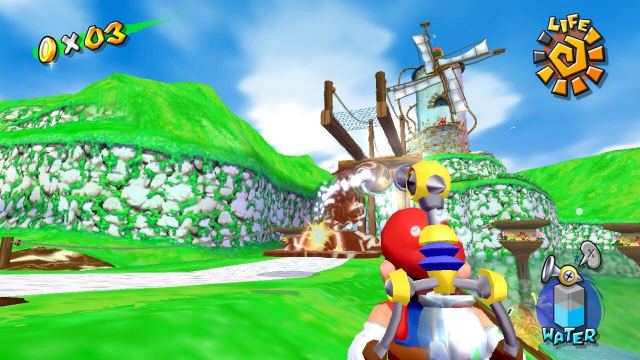
Super Mario Sunshine
Original Release Date: July 19, 2002
The second 3D adventure for Mario further changes the formula, while also keeping the DNA of Super Mario 64.
Super Mario Sunshine trades some of Mario’s new moves for a companion, the Flash Liquidizer Ultra Dousing Device, or FLUDD for short. After being thrown in the slammer and accused of polluting Isle Delfino, Mario has to clean up the once tropical resort and restore it to its former glory while also uncovering the mystery behind his shadowy doppelganger who started this whole mess.
Super Mario Sunshine takes a more linear approach compared to its predecessor, with each level being a linear trek through an open level. Each episode requires Mario to use FLUDD to either assist him in platforming or wash away the many paint-covered enemies in each location. After enough levels have been completed, Mario will face off against Shadow Mario, and free that section of the island from his grasp.
FLUDD isn’t just for cleaning off the paint around the island, his various nozzles also give Mario some new and unique movement abilities. The Rocket Nozzle allows Mario to soar into the sky, while the Turbo Nozzle allows him to dash at high speeds, giving him the power to break through special doors. Some levels will strip Mario of FLUDD, forcing the player to rely on their platforming skills alone to collect the many Shine Sprites around the island.
Super Mario Sunshine also serves as the formal introduction to Bowser Jr., Petey Pirhana, and Toadsworth as mainstay characters. As well as the introduction of Isle Delfino and the Piantas, which have reappeared as side characters and locations in the series, with their most recent sighting being Nintendo’s Mario Mash-up Pack in Minecraft. This title also serves as the one and only time the Mario cast (besides the man himself) was fully voiced in cutscenes.
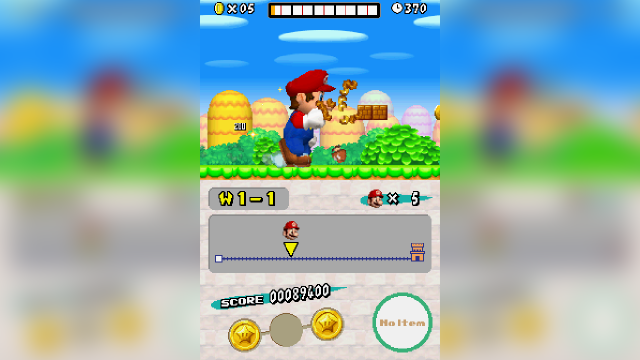
New Super Mario Bros.
Original Release Date: May 15, 2006
With the release of the Nintendo DS, Nintendo decided to go back to basics. After two back-to-back 3D games, (three if you count Super Mario 64 DS), Nintendo decided on a new 2D entry in the series that utilized the DS’ dual-screen display. With a mix of 3d models and sprites, Mario and Luigi travel through levels on the top screen, while progress and an extra item (ala Super Mario World) are shown on the bottom screen. With 8 full worlds and Vs. Play, New Super Mario Bros. was a breath of fresh air for 2D Mario fans, and a celebration of the legacy of the series, while also modernizing it with simple but challenging levels for players of any skill.
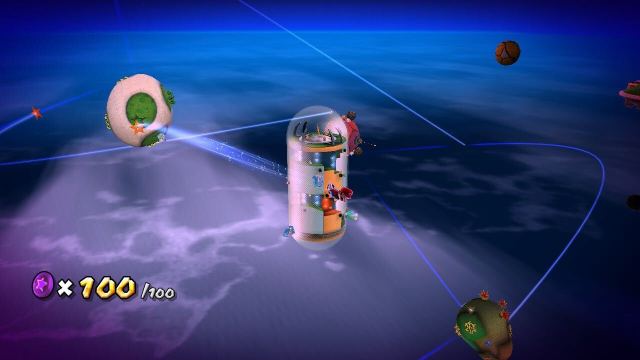
Super Mario Galaxy
Original Release Date: November 1, 2007
With the release of the Nintendo Wii, Mario’s next adventure would send him out of the Mushroom Kingdom and into the stars. Super Mario Galaxy further changed the gameplay of 3D Mario, by forgoing the open sandbox levels and keeping Mario on a more linear path within open galaxies. Starting a level allows you to explore, but there’s a direct path that will always take you to the star.
Being a game in space, Mario was now able to fly from planetoid to planetoid, each with its own gravitational pull. The Wii motion controls also allowed Mario to attack enemies in two different ways, either spinning with a flick of the Wiimote or jumping on enemies as he would normally. The Wii cursor also allowed the player to stun enemies with star bits Mario collected throughout his journey, as well as using those bits to open new areas via Hungry Lumas. A second player could jump in to play co-op though they won’t be taking control of Luigi. Player 2 will take control of a cursor on the screen, allowing them to stun enemies with star bits and give Mario an extra boost by clicking on him.
The new mechanics allowed Nintendo to experiment with level design and boss fights, having Mario scale a giant mech, or use new powerups, like the Bee Mushroom to climb alongside walls oozing with honey. Super Mario Galaxy also introduced mainstay characters to the series, such as the Lumas and Princess Rosalina, whose Comet Observatory functions as the hub for Mario’s out-of-this-world adventure.

New Super Mario Bros. Wii
Original Release Date: November 12, 2009
With the success of New Super Mario Bros. on the DS, Nintendo wanted to bring another 2D Mario to home consoles. Using the DS game as a jumping-off point, they used the extra power of the Wii to change how players take on this new 2D adventure.
New Super Mario Bros. Wii lets four players complete the game together, a first for the 2D games, as New Super Mario Bros. only included a Vs. mode. Mario, Luigi, and two Toads take on each level with new powerups and returning characters. Yoshi makes his appearance once more to aid Mario and his friends as they travel to save Princess Peach, and thanks to powerups like the Propeller Mushroom and the Ice Flower, enemies that previously had to be avoided can finally be dispatched.
When playing in co-op, one death doesn’t spell the end of a level, putting teamwork at the forefront of completing the adventure. With the ability to pick up other players, co-op can turn into a competition as well, allowing players to use motion controls to pick up their friends, and twist and turn platforms. New Super Mario Bros. Wii takes 2D Mario and turns it into a delightful party game where completing the level is only half of the fun!
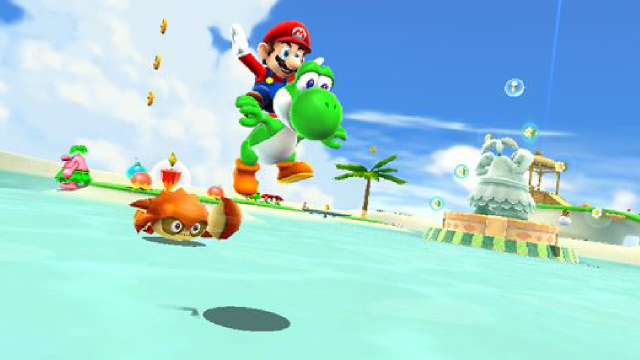
Super Mario Galaxy 2
Original Release Date: May 23, 2010
After the development of Super Mario Galaxy, Nintendo decided to make an enhanced version of the original title. Calling it, “Super Mario Galaxy 1.5″, they worked on the title for a year, until they realized the game included too many new ideas and too little of the original game. They ultimately decided that instead of making an enhanced version of the first game, they’d make a sequel instead.
Super Mario Galaxy 2 brings in plenty of new mechanics and ideas into the first game, Players will sail through the stars on Starship Mario, a spaceship made in the shape of Mario’s head. Levels will be chosen in a linear world map, similar to 2D titles, though the main gameplay loop of Galaxy remains the same.
Yoshi returns to help Mario on his second galaxy-hopping adventure. Yoshi can eat enemies with the Wiimote cursor, and also gobble up fruits that gave him special abilities.
Mario got two new powerups for this installment, the Rock Mushroom, which allowed him to roll through barricades and squish enemies, and the Cloud Flower, which gave him the ability to create temporary platforms.
Nintendo also took some notes from previous games and incorporated them into the title. Galaxies like Throwback Galaxy see Mario scale Whomp’s Fortress once more to defeat the Whomp King, and Supermassive Galaxy scales enemies and blocks up, being a world reminiscent of Super Mario Bros. 3’s World 4.
Players can also take on the game as Luigi once he’s saved partway through the adventure, allowing them to challenge themselves with his trademark high jump and slippery traction. Completing the game also nets the most skilled players World S, and its final ultimate gauntlet, Grandmaster Galaxy. This would mark the first time players get an optional, very difficult level meant for the most Super Players.

Super Mario 3D Land
Original Release Date: November 3, 2011
While not a sequel to Super Mario Land or its sequel, Super Mario 3D Land marks a critical change in the 3D Mario formula, blending the gameplay style of the 3D titles with the linearity of the 2D games. Mario’s health has reverted from a numbered meter to the way it works in 2D titles.
Players without a mushroom will turn into small Mario when taking damage, regaining their defense by acquiring another mushroom, or one of the powerups in the game. The Super Leaf makes its return in 3D Land, although, Mario cannot fly with it like in Super Mario Bros. 3. The isometric 3D platforming is aided thanks to the 3DS’ stereoscopic 3D, allowing players to judge their jumps with ease thanks to the added depth perception.
3D Land takes notes from other 2D and 3D titles like New Super Mario Bros. and Super Mario Galaxy 2. Around each level, there are star medals, which are the main source of progression behind unlocking courses in the game.
Aside from the eight worlds in Super Mario 3D Land, there are also eight special worlds. Completing the first world unlocks the ability to play as Luigi, complete with his high jump and low traction. Luigi can also acquire a Super Leaf like his brother. However, instead of becoming Tanooki Luigi as he did in Super Mario Bros. 3, Luigi becomes Kitsune Luigi. This title also introduced the Boomerang Flower, allowing a more horizontal attack as compared to the arching throw of the Hammer Bros. Suit.
Super Mario 3D Land was a game that seamlessly blended 3D gameplay with the 2D formula, providing a rich title with plenty of meat for Nintendo’s newest handheld.

New Super Mario Bros. 2
Original Release Date: July 28, 2012
Following the release of Super Mario 3D Land, Nintendo stuck its hands back into the lucrative New Super Mario Bros. bucket with the release of New Super Mario Bros. 2. Coins take the forefront of this title as the main gimmick, with a new powerup made to boot. Mario and Luigi can grab the Gold Glower and turn anything into coins by throwing golden fireballs. Gold Rings appear in levels as well, turning all enemies into golden variants that drop coins upon defeat. The main objective of the game, besides saving Princess Peach, is to collect as many coins as possible, with the counter on the main screen stopping at 9,999,999 coins.
The title marks the return of the Super Leaf in a 2D game, with its last appearance being Super Mario Bros. 3. This includes the P-Meter, which allows Mario to take to fly with the Super Leaf after a running start. Players will also be able to take on the game with a friend, allowing them to play as Luigi. The Super Leaf functions the same as in 3D Land, giving Luigi a Fox-themed look, rather than a Tanooki, like Mario.
Two players can complete the game together if both players have a copy of the game. The co-op mode functions similarly to New Super Mario Bros. Wii, with one character having control of the camera, despite there being two consoles.
The game’s length is also a bit shorter compared to most games. Players only have to complete 6 worlds if they want to finish New Super Mario Bros. 2. However, there are three special worlds that include challenges of their own.
Aside from the main game, players can compete against one another in Coin Rush. A time attack mode that challenges players to complete three stages on one life. Your score is calculated by how many coins you collect.
New Super Mario Bros. 2 is a solid entry in the New Super sub-series, though its short length and coin-focused gameplay loop stop it short of being a classic entry in the mainline series.
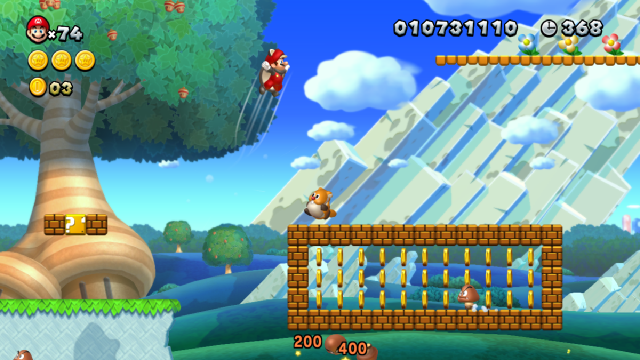
New Super Mario Bros. U
Original Release Date: November 18, 2012
With three iterations under their belt, Nintendo decided to further improve upon the New Super formula with New Super Mario Bros. U. While it looks similar to its previous installments, New Super Mario Bros. U includes more mechanics and changes that enhance the gameplay on Nintendo’s new console, the Wii U. A fifth player can join in on the fun using the Wii U gamepad with “Boost Mode”. When Boost Mode is activated, the player on the gamepad can place platforms to make tricker sections easier for players completing a level. Many of the powerups from New Super Mario Bros. Wii make a comeback, but New Super Mario Bros. U introduced a significant power-up of its own in the form of the Flying Squirrel suit. This new powerup allowed Mario to cling to walls, glide across chasms, and boost into the air for more height at the cost of his horizontal momentum.
Yoshi makes a return once more in this title, alongside Baby Yoshis. While the babies don’t grow into full-sized Yoshis, they do come with their own set of abilities that players can use in multiple courses if they complete it without losing one. For example, the Pink Baby Yoshi can be used as a balloon to fly through levels, whereas the Blue Baby Yoshi can encase enemies in bubbles.
NSMB U was re-released on the Nintendo Switch as New Super Mario Bros. Deluxe which included its Wii U stand-alone expansion New Super Luigi U. The expansion was a more challenging set of courses for players to take on as Mario’s brother, putting him on his own adventure. The switch version also came with two new characters, Toadette and Nabbit. Both characters were aimed at making the game easier for players. Toadette could transform into Peachette thanks to the new Super Crown item, while Nabbit cannot be hurt by any enemy, only dying if squished or falling down a bottomless pit.
New Super Mario Bros. U remains the most polished game in the New Super sub-series.
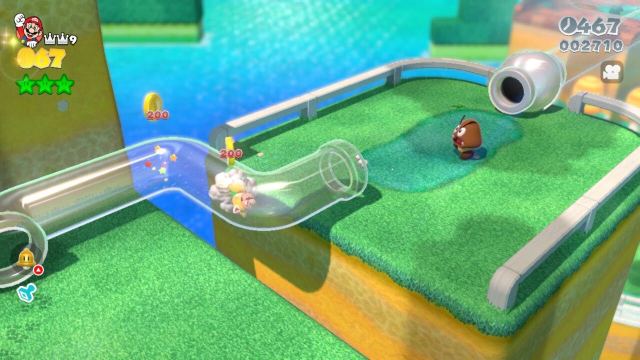
Super Mario 3D World
Original Release Date: November 21, 2013
Super Mario 3D World takes what it learned from Super Mario 3D Land and uses it to its advantage. Pulling from Super Mario Bros. 2, players can choose between Mario, Luigi, Peach, or Toad, before starting every level. Each character retains their abilities from Super Mario Bros. 2, with Toad being speedy, Princess Peach being able to float, and Luigi’s high jump.
Four players can complete the game together, much like New Super Mario Bros. Wii/U, with four players completing levels together as a group. Players will travel through the Sprixie Kingdom to stop Bowser, who’s skipped out on kidnapping the Princess to take over this new kingdom. 3D World introduces the Cat Suit to the game, allowing Mario and Co. to don cat outfits with abilities to match. The catsuit allows players to climb up walls and pounce on enemies.
After completing the game, the player can also unlock a special world and Rosalina as a playable character. Known for its bright and vibrant visuals and a stellar big-band soundtrack, 3D World is a fantastic addition to the 3D linear lineup that started with Super Mario Galaxy. With its re-release on Nintendo Switch, four-player online co-op is available as well!

Super Mario Maker
Original Release Date: September 10, 2015
Super Mario Maker does the unthinkable, it allows players to make their own 2D Mario courses. This opened the floodgates for young game designers and Mario aficionados alike to jump into this title, creating the courses of their dreams. Super Mario Maker lets players design courses, and apply one of four themes to the game. Players can make a course modeled after Super Mario Bros., Super Mario Bros. 3, Super Mario World, and New Super Mario Bros. U.
However, the game allows for more creativity, as makers can apply items to enemies to change their properties or use the many switches and gizmos in the game to create complex courses that function in their own special ways.
Complete with online functionality, Super Mario Maker lets players run through courses from other creators, creating a constant flow of new content. As Mario Maker continued its life cycle, costumes based on characters would be added through events and amiibo functionality. This meant you could hop and bop your way through the Mushroom Kingdom as Link, the Squid Sisters, or even Hatsune Miku. Allowing players to theme levels after other characters, like Link, The Squid Sisters, or even Babymetal.
Super Mario Maker was a revolutionary Mario game, giving players plenty of content to try out as they waited for the next mainline Mario title.

Super Mario Run
Original Release Date: December 15, 2016
Super Mario Run marks the first time Mario hopped onto mobile devices. As with other Nintendo franchises that ended up on iOS and Android, the company had to figure out the ideal way of giving players control of Mario while also adhering to the restrictions of a touch-screen-only device. The solution they came up with was to make Super Mario Run an auto-runner that could be played with just one finger. Taking inspiration from parkour in real life, Mario will vault over obstacles and enemies, and tapping the screen allows him to jump or springboard depending on what’s under him. With 33 levels to complete, each with 3 coin challenges, players had the perfect pick-up-and-play Mario game on the go.
When you weren’t completing Tour Mode, players could decorate the Mushroom Kingdom with the coins they collected on their journey. However, some buildings couldn’t be added unless a certain Toad population was met. This is where Toad Rally comes in. Players could compete against other players’ ghosts to see who’s the most stylish runner. Doing tricks and defeating enemies nets the player’s favor from the Toads. Whoever won would have the opponent’s toads move to their Mushroom Kingdom. This is how players would unlock new characters.
Super Mario Run also marks the first time Princess Daisy is a playable character in a mainline title. With the Remix 10 update, Daisy became an unlockable character for players to achieve by completing remixed courses that challenge even the most skilled runners.

Super Mario Odyssey
Original Release Date: October 27, 2017
Nintendo knew that players were hankering for a more open 3D Mario game. With Galaxy, Galaxy 2, 3D Land, and 3D World behind them, Nintendo wanted to go back to the formula that made Super Mario 64 and Super Mario Sunshine so popular. Thus, Super Mario Odyssey was brought to the masses.
After being defeated by Bowser, Mario is flung into the neighboring Cap Kingdom, and rescued by Cappy, a hat ghost. Once he learns that Mario is on his way to stop Bowser, the two team up, with Cappy taking the form of Mario’s iconic hat. Cappy takes the role of FLUDD from Super Mario Sunshine, enhancing Mario’s move set by aiding him in obstacles. Mario can bounce off of Cappy to gain an extra jump or be spun around Mario to defeat small enemies. Mario retains his own move set without Cappy’s help, but the game encourages using both of them together to complete the difficult platforming challenges.
However, Cappy has another trick up his sleeve. Mario can use Cappy to “capture” other enemies, taking on their abilities to solve environmental puzzles or to reach certain spots in levels he couldn’t on his own. With nearly everything in the world being capturable, such as cars, traffic cones, dinosaurs, and Chain Chomps, the opportunities for exploration and puzzle-solving are plenty. This title also formerly reintroduces Pauline to modern audiences. Formerly the damsel in Donkey Kong, she now resides as the mayor of New Donk City.
Each Kingdom is an open sandbox, with no discernable goal except to find and collect Moons, the game’s main collectible. Without a hub world like Sunshine or Mario 64, players will jump right back into the action after picking up a moon, streamlining each objective, and allowing players to really explore each world without being pulled out of the gameplay loop. Each world has its own story, and some moons can’t be collected until Mario and Cappy solve the kingdom’s problem. Each kingdom also includes purple coins, which can be spent in shops to buy new outfits for Mario, or other cosmetic items for the ship Mario and Cappy travel the world in. Some costumes are required to access Moons in each kingdom.
Completing the game also allows players to find new moons, which have been scattered about each Kingdom after Mario stops Bowser once and for all. Once enough post-game moons have been collected, players can travel to the Dark Side of the Moon. Traveling here gives the player one final platforming gauntlet that challenges them on everything they’ve learned, utilizing all the main capture mechanics found in each kingdom.
Super Mario Odyssey is one of the most ambitious Mario titles to date and a breath of fresh air where linear games were becoming the norm.
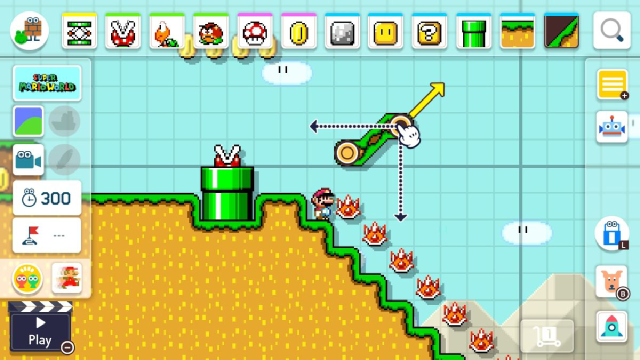
Super Mario Maker 2
Original Release Date: June 28, 2019
Super Mario Maker 2 gives players new tools and themes to allow new and creative ways to build the most eccentric Mario courses. Nintendo listened to fans when making this new installment and introduced many new fixes to mechanics in the original. The most noteworthy one is the addition of slopes, as players couldn’t make slopes in the original. Players were very vocal about slopes not being included in the title until it was revealed as the first new addition in Super Mario Maker 2’s trailer.
A new theme based on Super Mario 3D World was also put into the title, allowing players to build stages with clear pipes and use of the Super Bell in a 2D environment.
A story mode was included in the game as well, with Mario and Toadette rebuilding Princess Peach’s Castle after Undodog reset their progress. Completing the many levels made by Nintendo would net the player coins, used to complete the castle. However, some levels would net the player cosmetics for their Mii character.
Super Mario Maker 2 focused a lot more on the online aspect of the title, allowing players to play against or with one another in 4-player online play. However, this camera didn’t focus on one player, instead each player had their own screen and could complete levels together, or competitively.
Nintendo also constantly updated the game, with the most significant addition being World Maker. This allowed players to compile their levels into a world map, much like other 2D Mario games. Although the Super Mario World theme was the only theme available for the overworld map, each level could be any theme players wanted.
Players were able to compile eight worlds together into a “Super World” allowing them to make functionally complete games, and upload them onto the platform.
Super Mario Maker 2 transcends the original providing new mechanics and ways to play, allowing players to make full Mario adventures using the power of their own imagination.

Super Mario 3D World + Bowser’s Fury
Original Release Date: February 12, 2021
Included in the Super Mario 3D World port for the Nintendo Switch, the next mainline game, Bowser’s Fury is more of an ambitious title for Nintendo’s 3D Mario games.
Taking place after the events of 3D World, Bowser’s Fury is a mix of open-world 3D platforming, with the same health and item mechanics that are found in its predecessor. Players will be able to explore many small islands around Lake Lapcat, and complete platforming challenges to acquire Cat Shines. Much like Super Mario Odyssey, the player won’t be transported anywhere after collecting a shine, so they’ll be able to jump right back into the action.
All the powerups from 3D World make an appearance, and Mario can store multiple items to use when he needs them. Mario can also get around the many islands in the lake by riding alongside Plessie’s back, who makes a return from 3D World. After enough time has passed in the lake, Bowser, who’s being controlled by the black goop, will rise up and attack Mario. His massive Fury Form is devastating and can’t be stopped when Mario is his normal size. However, Bowser will disappear and return to his slumber after a few minutes of attacking.
If the player has collected enough Cat Shines, the Giga Bell will be awoken, and Mario can touch it to become Giga Cat Mario. This will let players take on Bowser as a boss, and his defeat will open up more of Lake Lapcat, allowing him to progress.
Bowser’s Fury is an ambitious take on a 3D Mario game, mixing the mechanics of a 2D title, with the open-world exploration of Super Mario Odyssey.

Super Mario Bros. Wonder
Original Release Date: October 20, 2023
Super Mario Bros. Wonder is the latest mainline title to release in the series. Announced during the June 2023 Nintendo Direct, this new title strips the “New” from New Super Mario Bros. and reveals itself as a wholly original 2D Mario game.
Not much is known about the game. However, the trailers did show footage of what to expect in this new title. Four-player co-op returns and players will now be able to take on the adventure as Princess Daisy, joining the other heroes for a second time since Super Mario Run.
The new art style for the game ditches the 3D-rendered sprites from the New Super series, in exchange for more animated and expressive characters. Heading through the levels, players will encounter Wonder Flowers, which will change the level’s attributes, and possibly the characters themselves, as one of the clips in the trailer shows Mario becoming extremely tall. It’s very possible this new game could also take place outside of the Mushroom Kingdom, as one of the level titles in the trailer says “Welcome to the Flower Kingdom”.
New power-ups are set to make an appearance. As the trailer showcases a power-up, that turns Mario into an elephant, allowing him to use his trunk to attack enemies. It’s not certain whether this is a powerup only Mario can use or a powerup anyone can.
There’s still plenty to be seen about Super Mario Bros. Wonder, although we won’t find out what the future of the Mario series holds until later this year.






Published: Jun 28, 2023 07:59 am